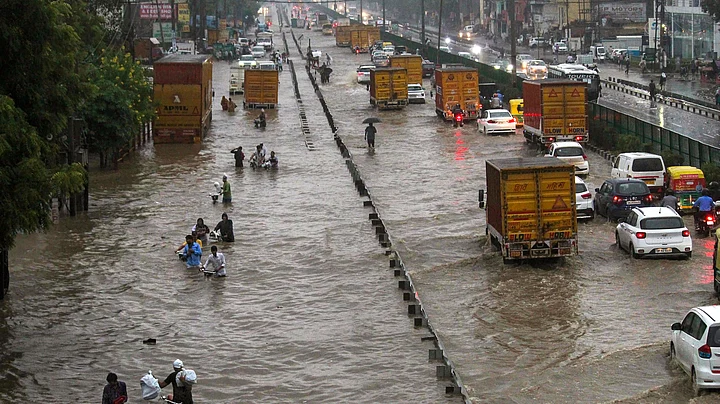India’s four-month-long monsoon ended on 30 September 2022. Despite the uncertain start, the end of September brought along surplus rains.
The Southwest monsoon was predicted to have above average rainfall. The country recorded 925 mm of rain against the normal of 870 mm from June 1 to September 30.
Monsoon variability has increased drastically due to climate change and this has become a cause for concern, a recent report by Climate Trends has said.
La Nina & 4th Consecutive Year of Above-Average Rainfall in India
India has seen above average rainfall during the monsoon season for the 4th consecutive year. In August, India recorded the 8th highest rainfall since 2001.
This increase in rainfall can be attributed to prevailing La Niña conditions across the Pacific Ocean for the third year in a row.
Despite majority of the country recording surplus rains, 187 districts of India reported a deficit in rainfall, while seven districts reported a severe deficit.
Observing three consecutive La Nina in the northern hemisphere is considered a rare phenomenon. Experts call this phenomenon a ‘triple dip.’ The triple dip has only occurred twice since 1950.
Even though the increase in monsoon rains is directly being linked to La Nina, this is not always the case. The argument for La Nina does not have the most convincing cause-effect relationship. However, monsoon rains have been found to be stronger in the years of La Nina.
Monsoon Variability in the Last 5 Years: Severe Rainfall Deficits and Excesses
East and Northeast India has been facing severe deficiency in rainfall for the last decade. In 2022, these regions recorded a deficit of 18%. The west coast and the northeast are the biggest contributors in Monsoon rainfall.
The northwest has also been struggling with below normal rainfall, more specifically Delhi. However, they managed to record normal rain by 1% due to the late September rainfall.
A trend has been noticed in the last 4-5 years. It was observed that in the most recent season, the weather systems formed in July, August and September and travelled across Central India rather than the more traditional route over the Indo-Gangetic plains.
Due to this, states that are not accustomed to heavy rainfall, recorded excess rains this year.
“It has been very complex to understand the rainfall variability and how Monsoon patterns have been behaving off late, especially this year. The problem is very challenging for us to apprehend, which calls for a lot more research. What we are witnessing across the country, flooding in one region and deficit rainfall in other parts, is a combination of several parameters. Persistence of intense La Nina conditions, abnormal warming of East Indian Ocean, negative Indian Ocean Dipole (IOD), southward movement of most of the Monsoon depressions and lows and pre-Monsoon heating over Himalayan region melting glaciers. This is a very complex mix.”Dr R Krishnan, Executive Director, Centre for Climate Change Research, Indian Institute of Tropical Meteorology (IITM).
